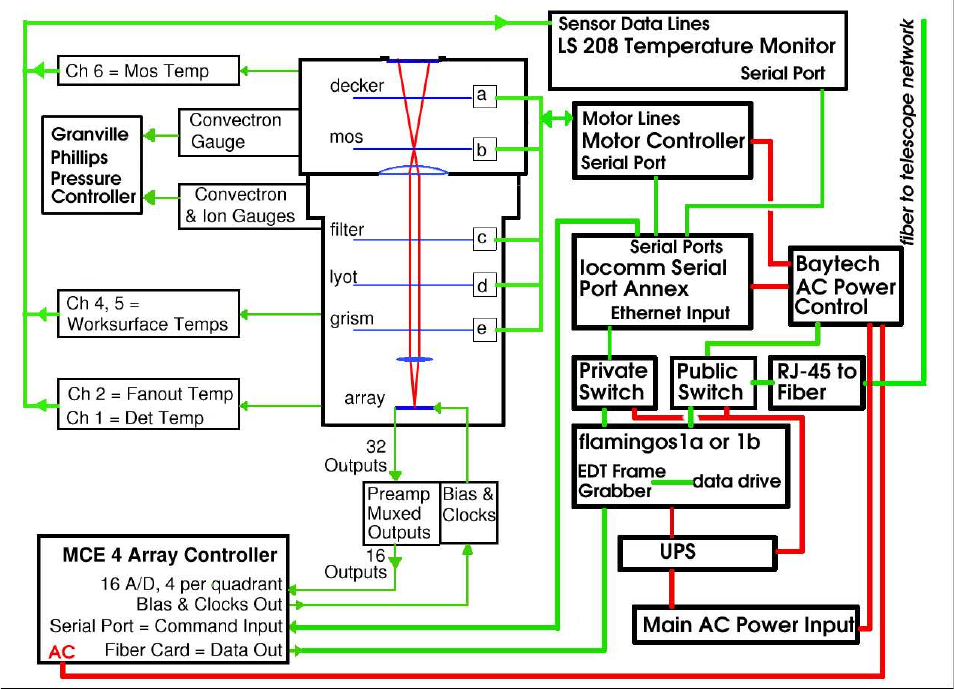Troubleshooting guide

FLAMINGOS@4-m, Ver. 2.34, 2006 Apr 04 Page 6 of 44
Figure 1. FLAMINGOS Functional Diagram. The relative layout and connnections between the various parts of
FLAMINGOS are shown shematically. A schematic of the MOS and Camera dewars is shown in the middle of the figure,
including the relative layout of the 5 internal mechanisms above the detector array, and the elements of the two electronics
racks are shown on either side of the dewars, much as they are in actuality.
The input beam from the telescope is shown in red; it passes first through the Decker wheel (a baffle wheel) to the
MOS wheel at the Cassegrain focus. The beam is collimated (some optical elements are not diagramed in this figure)
before passing through the Filter, Lyot, and Grism wheels, and then through the camera optics to the detector array.
Biases and Clock voltages are input into the array by MCE4, the array controller. All 4 quadrants of the array are read
out through all 32 output amplifiers; they are muxed down to 16 outputs at the preamp before they are sent into the 16
A/Ds on MCE4. The final output image is then sent via a fiber to the EDT frame grabber on the control computer
flamingos1a or 1b, where it is written to the data drive.
The observer makes a remote connection to flamingos1a/1b via the RJ-45 to fiber media converter at the instrument's
public network switch. The Baytech networked AC power control module is accessible from flamingos1a/1b or a Kitt
Peak machine, and the observer may toggle the power to MCE4, the Perle (formerly the Iocomm) serial port annex or the
Motor controller.
Three software daemons running on flamingos1a/1b transfer commands via the private network switch to the Perle
(which replaced the Iocomm), which passes the commands to the serial port of the correct device. The three devices are
the MCE4 Array Controller, the Motor Controller, and the LS208 Temperature Monitor.










